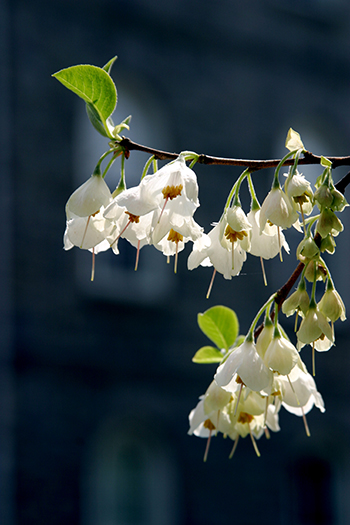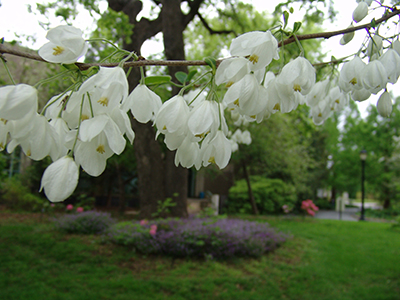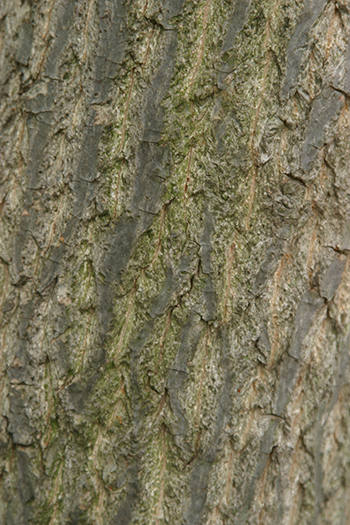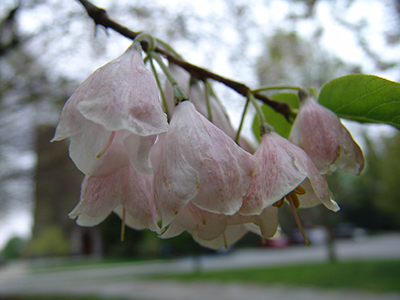
Plant of the Month: Halesia

A plant I’m always excited to see in the landscape is Halesia, a genus of trees commonly known as silverbell. While rare in cultivation these trees offer top-notch ornamental qualities throughout the year. I consider the pendulous bell-shaped flowers among the most attractive of any native plant.

Halesia tetraptera can be found at the Scott Arboretum. photo credit: D. Mattis
There are up to four native Halesia species in the U.S., (taxonomical ambiguities are at play) H. tetraptera, H. carolina, H. diptera, and H. monticola. With most species bearing close resemblance to each other, and overlapping native ranges, it can be hard to tell one species from another.

Halesia diptera var magniflora is another specimen found on campus. photo credit: R. Robert
Though all species are impressive in their own right, the mountain silverbell, H. tetraptera var. monticola (the Arboretum recognizes this as a variety), stands above the others, both literally and figuratively. This tree grows throughout the southern Appalachian Mountains of Tennessee, North Carolina and Georgia. H. carolina and H. diptera inhabit more in the Deep South.
While typically 40-80’ feet tall, H. tetraptera var. monticola is much larger than the H. tetraptera straight species. In old growth forests, the mountain silverbell can reach extraordinary heights, up to 110’. The flowers of H. tetraptera var. monticola are also much larger than those of H. tetraptera and H. carolina, and have white and peachy coloration. Flowers of the mountain silverbell give way to fruits bearing four distinct wings, a visual treat that I enjoy as much as the flowers themselves.

The bark of Halesia trees is also a favorite of mine, strong in appearance, it features gray with darker striations and flattened ridges. photo credit: D. Mattis
The bark of Halesia trees is also a favorite of mine, strong in appearance, it features gray with darker striations and flattened ridges. Elliptic, obovate foliage varies slightly between Halesia species, and is attractive.
Consider using a Halesia tree at your home, as a specimen, at the rear of a shrub border, against a coniferous backdrop or as an understory plant, as it would be found growing naturally. Silverbell appreciates part to full-sun and moist, well-drained soil.

A pink flowered cultivar, H. tetraptera var. monticola ‘Rosea’ is a particularly dashing variety that can be found in the West Parrish Circle. photo credit: R. Robert
While it may prove difficult to find a specimen of H. tetraptera var. monticola for sale, truly any silverbell is a winning choice. A pink flowered cultivar, H. tetraptera var. monticola ‘Rosea’ is a particularly dashing variety that can be found in the West Parrish Circle. The Scott Arboretum is home to all of the native Silverbellsl; try finding each with the Scott Arboretum navigator, to see which is your favorite!





Robert Roggeveen
Posted at 07:36h, 23 MayThis is a wonderful tree to have. Extraordinary in flower. Hale’s is tetraptera var. monticola is available at Broken Arrow Nursery in Hamden, Conn. UConn Wedding Bells is an outstanding variety of H. tetraptera.
Becky Robert
Posted at 08:24h, 26 MayThank you for the tip, Robert. We love this native tree too!
Sincerely,
Becky Robert
Scott Arboretum